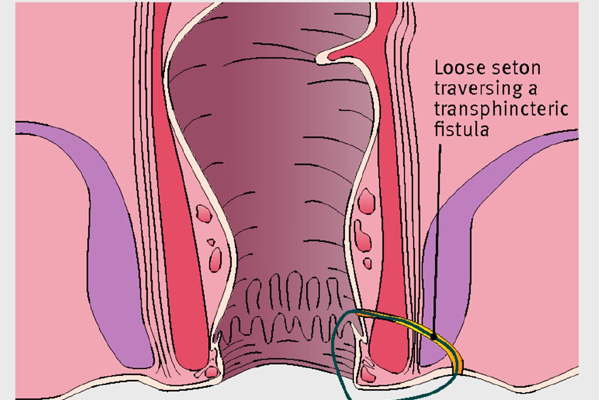Closure of Anal Fistula
A fistula is an abnormal interconnection of two cavities or spaces in the body. The anal fistula involves the interconnection of the anal cavity with the external body, the vagina, or the perineal area.

A fistula is an abnormal interconnection of two cavities or spaces in the body. The anal fistula involves the interconnection of the anal cavity with the external body, the vagina, or the perineal area.

The fistulae are caused by a myriad of factors, some which include trauma either during childbirth or traumatic rape in young children or in relation to other diseases such as cancers of the anal region, tuberculosis, diabetes mellitus, obesity or foreign bodies.
Closure of any anal fistula is of importance to avoid the leakage of fecal matter in channels that are not anatomically appropriate and the resultant complications of the fistula such as sepsis and social shame.
There are many approaches to dealing with the fistula some include; fistulectomy, fistulotomy, glue application, and advancement flap use. A fistula hardly heals on its own and requires surgical interventions, thus all these are aimed at closing the abnormal connections.
Fistula repair surgeries are indicated in the following situations:
Most fistulae are easy to deal with without any major complications. The major surgical approaches for dealing with it include:
Fistulotomy involves the lying down of all the structures between the internal and the external sphincter and cutting down the wound edges so that healing can occur. Suturing could be done immediately after lying down. This is done when the patient is sedated and in the lithotomy position.
Fistulectomy involves completely excising the fistula. It is associated with prolonged healing time.
Used when the fistula is not too deep into the sphincters. A flap of the anal mucosa and the internal sphincter should be used.
Uses fibrin glue to fix the fistulae and allow for the growth of tissues naturally to fix it. Great for short term fixation.
There is a great risk of infections during these procedures; therefore prophylactic antibiotics should be given. The fistulotomy offers a high risk for incontinence as it may lay open the sphincters causing the division of the muscle fibers. Some of the fistula closing operations involve cutting and dissecting the fistula margins and delayed healing. Is could result in bleeding with the treatment approach.
The recovery after the procedure is quite impressive. Several measures have to be taken however to ensure a faster healing process in all patients. Fistulotomy heals much faster compared to fistulectomy. Hygiene is paramount in fistulae patients. Make sure the wound is kept clean and the dressings changed whenever necessary. This is aimed at preventing infection of the wound causing sepsis and also preventing the accumulation of soiled dressings in a sickly patient.Laxatives should be prescribed.
The fistulae normally heal well after surgical interventions. Reexamination of the fistulae is compulsory especially with the complex fistulae to ensure that the healing process is going as planned and there are no new fistulae formation taking place.